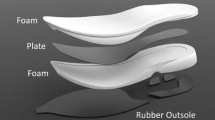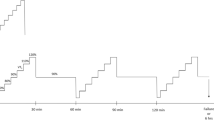Abstract
Exposure to microgravity leads to “cardiovascular deconditioning” (CVD), because of the fluids shift toward the thorax. CVD is characterised by: 1) a decrease of plasma and interstitial fluid volumes, 2) a relative increase of the erythrocytes mass, 3) a decrease of arterial diastolic pressure, of the stroke volume, of the end-diastolic volume and of the left ventricular mass. CVD can be expected to occur also in astronauts living permanently on Lunar or Martian bases, since on these celestial bodies the acceleration of gravity is about 0.165 and 0.379 the Earth value. In these conditions, cycling on appropriately constructed tracks may be useful to recreate artificial gravity and to allow the astronauts to perform physical exercise. Indeed, a cyclist riding a bicycle on a circular track, generates an outward acceleration vector which depends on the radius of the track and on the ground speed. The vectorial sum of this last and the acceleration of gravity acts in the head to feet direction, thus increasing the effects of gravity on the cardiovascular system. We propose to construct on a Lunar or Martian base a circular “track tunnel” with a radius of 25 m. We show here that when cycling on this track tunnel at speeds between 10 to 15 m · s − 1, astronauts will generate a g vector acting along the head to feet axis ranging from 0.44 to 0.99 of the Earth value. We suggest that the logistics and feasibility of these track-tunnels should be studied in view of their possible implementation.
Similar content being viewed by others
References
Antonutto, G., Capelli, C., Di Prampero, P.E.: Pedalling in space as a countermeasure to microgravity deconditioning. Microgravity Q. 1, 93–101 (1991)
Antonutto, G., Capelli, C., Girardis, M., Zamparo, P., di Prampero, P.E.: Effects of microgravity on maximal power of lower limbs during very short efforts in humans. J. Appl. Physiol. 86, 85–92 (1999)
Brunelli, F.: Foundamentals of space life sciences. In: Churcill, S.E. (ed.) Human Factors and Habitability Issues for the Design of Space Habitats, pp. 221–246. Krieger, Melbourne (1993)
Bungo, M.W., Johnson, P.C.: Cardiovascular examinations and observations of deconditioning during the space shuttle orbital flight test program. Aviat. Space Environ. Med. 54, 1001–1004 (1983)
Bungo, M.W., Goldwater, D.J., Popp, R.L., Sandler, H.: Echocardiographic evaluation of space shuttle crewmembers. J. Appl. Physiol. 62, 278–283 (1987)
Burton, R.R.: Artificial gravity in space flight. J. Gravit. Physiol. 1, 15–18 (1994)
Burton, R.R., Meeker, L.J.: Taking gravity into space. J. Gravit. Physiol. 4, 17–20 (1997)
Cardus, D.: Artificial gravity in space and in medical research. J. Gravit. Physiol. 1, 19–22 (1994)
Charles, J.B., Bungo, M.W., Fortner, G.W.: Space physiology and medicine. In: Nicogossian, A.E., Leach Huntoon, C., Pool, S.M. (eds.) Cardiopulmonary Function, pp. 286–304. Lea & Febiger, Philadelphia (1994)
Churchill, S.E., Bungo, M.W.: Fundamentals of space life sciences. In: Churchill, S.E. (ed.) Response of the Cardiovascular System to Spaceflight, pp. 41–63. Krieger, Malabar (1997)
Clement, G.: Fundamentals of Space Medicine. Springer, Berlin (2005)
Delp, M.D.: Arterial adaptations in microgravity contribute to orthostatic tolerance. J. Appl. Physiol. 102, 836 (2007)
di Prampero, P.E.: Cycling on Earth, in space, on the Moon. Eur. J. Appl. Physiol. 82, 345–360 (2000)
di Prampero, P.E., Narici, M.V.: Muscles in microgravity: from fibres to human motion. J. Biomech. 36, 403–412 (2003)
Dorfman, T.A., Levine, B.D., Tillery, T., Peshock, R.M., Hastings, J.L., Schneider, S.M., Macias, B.R., Biolo, G., Hargens, A.R.: Cardiac atrophy in women following bed rest. J. Appl. Physiol. 103, 8–16 (2007)
Fritsch, J.M., Charles, J.B., Bennett, B.S., Jones, M.M., Eckberg, D.L.: Short-duration spaceflight impairs human carotid baroreceptor-cardiac reflex responses. J. Appl. Physiol. 73, 664–671 (1992)
Gazenko, O.G., Schilzenko, E.B., Yegorov, A.D.: Cardiovascular changes in prolonged spaceflights. In: 36th IAF Conference, Stockholm, 7–12 October 1985
Grandl, W.: Lunae Base 2015 Stage I. Preliminary design study. Acta Astronaut. 60, 554–560 (2007)
Greenleaf, J.E., Gundo, D.P., Watenpaugh, D.E., Mulenburg, G.M., McKenzie, M.A., Looft-Wilson, R., Hargens, A.R.: Cyclepowered short radius (1.9 m) centrifuge: effect of exercise versus passive acceleration on heart rate in humans. NASA Technical Memorandum (1997)
Henry, W.L., Epstein, S.E., Griffith, L.M., Goldstein, R.E., Redwood, D.R.: Biomedical results from Skylab (NASA SP-377). In: Johnston, R.S., Dietlein, L.F. (eds.) Effect of Prolonged Space Flight on Cardiac Function and Dimension, pp. 366–371. US Government Printing Office, Washington DC (1977)
Hinghofer-Szalkay, H.C.: Biological and medical research in space. In: Moore, D., Bie, P., Oser, H. (eds.) Physiology of Cardiovascular, Respiratory, Interstitial, Endocrine, Immune and Muscular Systems, pp. 107–153. Springer, Berlin (1996)
Hwang, S., Shelkovnikov, S.A., Purdy, R.E.: Simulated microgravity effects on the rat carotid and femoral arteries: role of contractile protein expression and mechanical properties of the vessel wall. J. Appl. Physiol. 102, 1595–603 (2007)
Lane, H.W., Alfrey, C.P., Driscoll, T.B., Smith, S.M., Nyquist, L.E.: Control of red blood cell mass during spaceflight. J. Gravit. Physiol. 3, 87–88 (1996)
Nelson, M.: Foundamentals of space life sciences. In: Churcill, S.E. (ed.) Bioenergetic Life Support for Space Habitation and Extended Planetary Missions, pp. 315–336. Krieger, Melbourne
Newman, D., Barratt, M.: Foundamentals of space life sciences. In: Churcill, S.E. (ed.) Life Support and Performance Issues for Extravehicular Activity, pp. 337–364. Krieger, Melbourne (1997)
Pavy-Le Traon, A., Heer, M., Narici, M.V., Rittweger, J., Vernikos, J.: From space to Earth: advances in human physiology from 20 years of bed rest studies (1986–2006). Eur. J. Appl. Physiol. 101, 143–94 (2007)
Powell, M.R., Horrigan, D.J., Waligora, J.M., Norfleet, W.T.: Space physiology and medicine. In: Nicogossian, A.E., Huntoon, C.L., Pool, S.L. (eds.) Extravehicular Activities, pp. 128–140. Lea & Febiger, Philadelphia (1993)
Tuday, E.C., Meck, J.V., Nyhan, D., Shoukas, A.A., Berkowitz, D.E.: Microgravity-induced changes in aortic stiffness and their role in orthostatic intolerance. J. Appl. Physiol. 102, 853–858 (2007)
Vil-Viliams, I.F., Kotovskaya, A.R., Shipov, A.A.: Biomedical aspects of artificial gravity. J. Gravit. Physiol. 4, 27–28 (1997)
Yegorov, A.D., Alferova, I.V., Polyakiva, A.P.: State of cardiodynamics under conditions of long-term weightlessness. Kosm. Biol. Aviakosm. Med. 22, 4–7 (1988a)
Yegorov, A.D., Itsekhovskiy, O.G., Alferova, I.V., Turchaninova, V.F., Polenova, A.P., Golubchikova, Z.A., Domracheva, M.V., Lyamin, V.R., Turbasov, V.D.: Study of cardiovascular system of Salyut-6 prime crew. USSR Space Life Digest. 14, 18–19 (1988b)
Author information
Authors and Affiliations
Corresponding author
Rights and permissions
About this article
Cite this article
di Prampero, P.E., Lazzer, S. & Antonutto, G. Human Powered Centrifuges on the Moon or Mars. Microgravity Sci. Technol 21, 209–215 (2009). https://doi.org/10.1007/s12217-008-9046-z
Received:
Revised:
Accepted:
Published:
Issue Date:
DOI: https://doi.org/10.1007/s12217-008-9046-z




